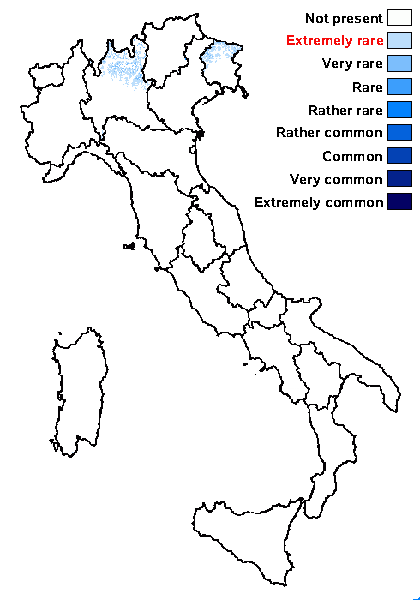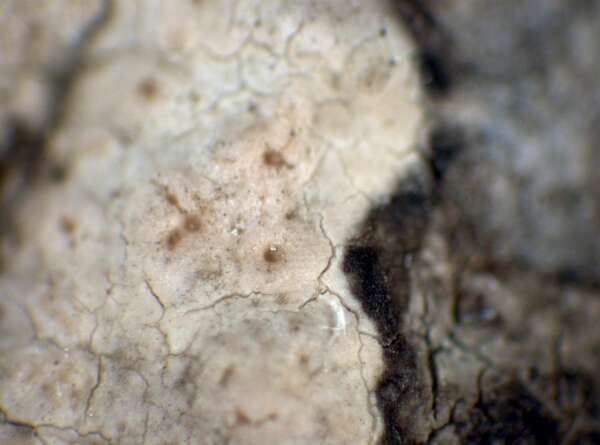Gyalecta subclausa Anzi
Neosymb. Lich. Rar. Nov.: 8, 1866.
Synonyms: Gyalecta chlorobaea Nyl.; Gyalecta elegantula Müll. Arg.; Gyalecta rosellovirens Nyl.
Distribution: N - Frl, Lomb.
Description: Thallus crustose, usually episubstratic but thin and often poorly visible, continuous or faintly rimose, pale pink to whitish. Apothecia 0.2-0.3(-0.4) mm across, at first immersed in the thallus and almost perithecioid, then sessile, urceolate, with a slightly concave, pink to pale yellowish disc, and a whitish, smooth, prominent proper margin. Epithecium almost colourless to pale orange-brown; hymenium colourless, 90-110 µm high; paraphyses swollen at apices, slightly longer than the mature asci; hypothecium colourless. Asci 8-spored, cylindrical to elongate-subclavate, thin-walled, without tholus, the wall K/I+ blue. Ascospores submuriform, hyaline, very variable in shape (subglobose to ellipsoid or slightly diamond-shaped), 10-16(-18) x 6-10 µm. Photobiont trentepohlioid. Spot tests: K-, C-, KC-, P-, UV-. Chemistry: without lichen substances.
Note: an inconspicuous, perhaps overlooked species found on vertical faces of calcareous rocks in humid, damp and shaded situations in upland areas.
Growth form: Crustose
Substrata: rocks
Photobiont: Trentepohlia
Reproductive strategy: mainly sexual
Commonnes-rarity: (info)
Alpine belt: absent
Subalpine belt: very rare
Oromediterranean belt: absent
Montane belt: extremely rare
Submediterranean belt: absent
Padanian area: absent
Humid submediterranean belt: absent
Humid mediterranean belt: absent
Dry mediterranean belt: absent

Predictive model
Herbarium samples
Growth form: Crustose
Substrata: rocks
Photobiont: Trentepohlia
Reproductive strategy: mainly sexual
Commonnes-rarity: (info)
Alpine belt: absent
Subalpine belt: very rare
Oromediterranean belt: absent
Montane belt: extremely rare
Submediterranean belt: absent
Padanian area: absent
Humid submediterranean belt: absent
Humid mediterranean belt: absent
Dry mediterranean belt: absent

Predictive model
| Herbarium samples |
 INDEX FUNGORUM
INDEX FUNGORUM
 GBIF
GBIF
 DOLICHENS
DOLICHENS




